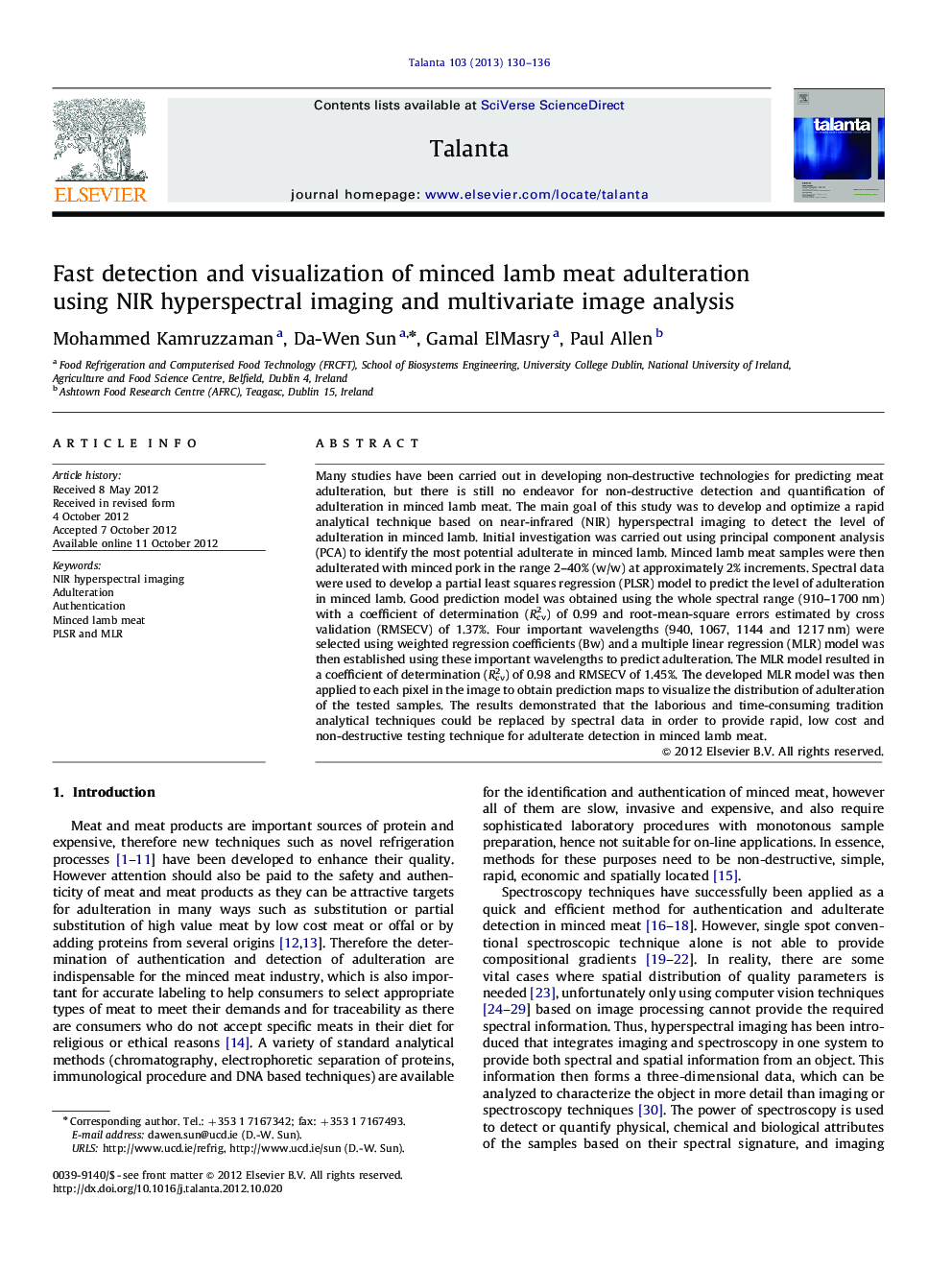| Article ID | Journal | Published Year | Pages | File Type |
|---|---|---|---|---|
| 1242910 | Talanta | 2013 | 7 Pages |
Many studies have been carried out in developing non-destructive technologies for predicting meat adulteration, but there is still no endeavor for non-destructive detection and quantification of adulteration in minced lamb meat. The main goal of this study was to develop and optimize a rapid analytical technique based on near-infrared (NIR) hyperspectral imaging to detect the level of adulteration in minced lamb. Initial investigation was carried out using principal component analysis (PCA) to identify the most potential adulterate in minced lamb. Minced lamb meat samples were then adulterated with minced pork in the range 2–40% (w/w) at approximately 2% increments. Spectral data were used to develop a partial least squares regression (PLSR) model to predict the level of adulteration in minced lamb. Good prediction model was obtained using the whole spectral range (910–1700 nm) with a coefficient of determination (R2cv) of 0.99 and root-mean-square errors estimated by cross validation (RMSECV) of 1.37%. Four important wavelengths (940, 1067, 1144 and 1217 nm) were selected using weighted regression coefficients (Bw) and a multiple linear regression (MLR) model was then established using these important wavelengths to predict adulteration. The MLR model resulted in a coefficient of determination (R2cv) of 0.98 and RMSECV of 1.45%. The developed MLR model was then applied to each pixel in the image to obtain prediction maps to visualize the distribution of adulteration of the tested samples. The results demonstrated that the laborious and time-consuming tradition analytical techniques could be replaced by spectral data in order to provide rapid, low cost and non-destructive testing technique for adulterate detection in minced lamb meat.
► We develop NIR hyperspectral imaging for predicting adulteration in minced lamb meat. ► We use spectral data to predict the level of adulteration in minced lamb. ► We select some important wavelengths to develop a low cost multispectral imaging. ► Finally, we develop image processing algorithm to produce prediction maps.
